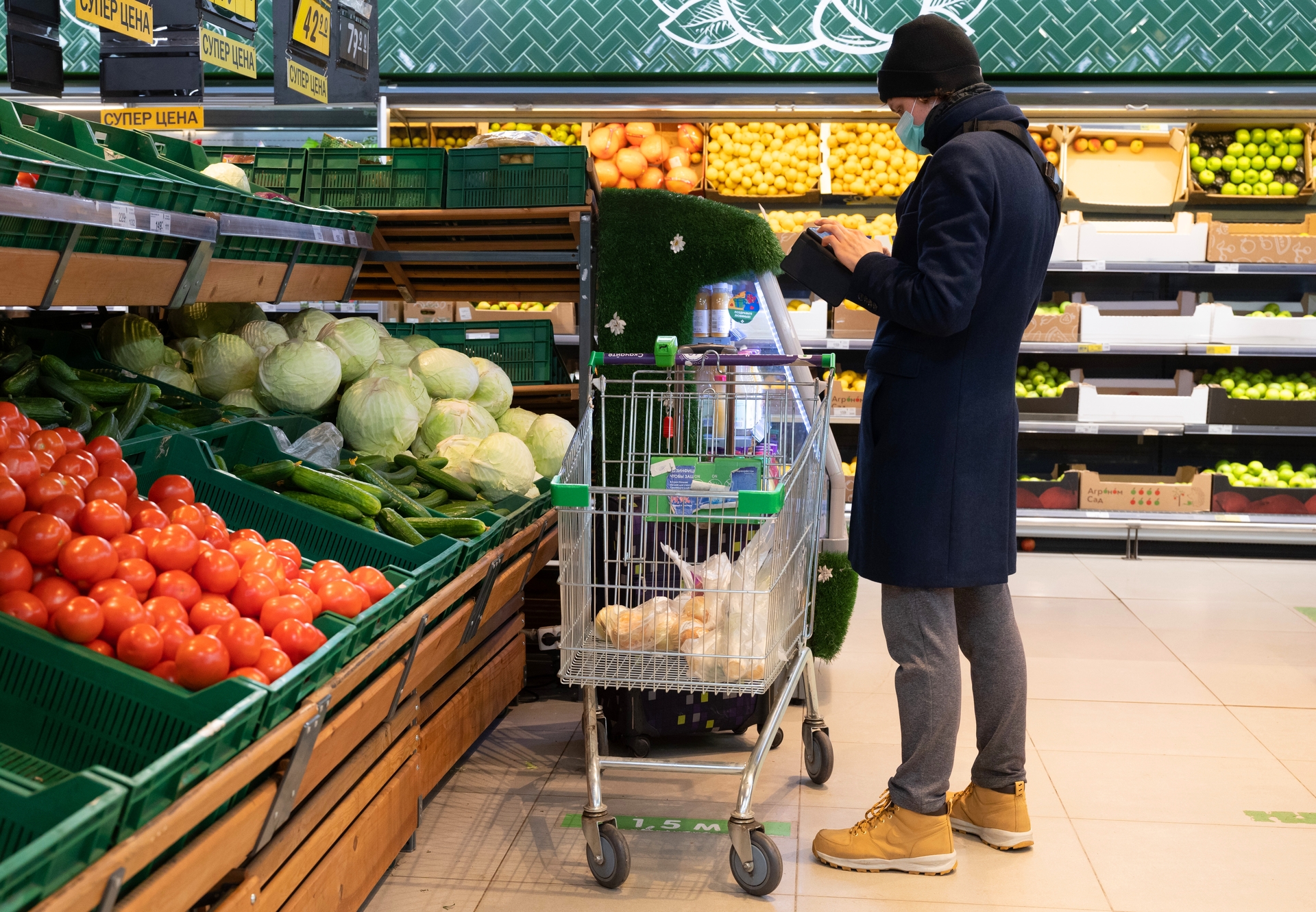In 2021, the Russian economy returned to a pre-pandemic trajectory.
This was announced on Thursday, November 18, by the chairman of the Central Bank Elvira Nabiullina.
According to her, at the moment the main task is to move from recovery to sustainable growth, and for this "it is necessary to suppress the negative effects" of the coronavirus.
First of all, we are talking about the fight against inflation, said the head of the Central Bank.
“In our country, inflation has not been low for so long: only four years close to the target of 4%.
Now it is twice as high, and food supply is already, unfortunately, double-digit, "Nabiullina said during her speech at the State Duma.
As the head of the regulator explained, the cost of food in the country increased against the backdrop of weak harvest indicators and a global rise in food prices.
The rise in the cost of labor in agriculture also affected, since the number of labor migrants who came to Russia for seasonal work decreased.
The rise in food prices, in turn, leads to the acceleration of inflationary expectations, said Nabiullina.
So, people are afraid of a further rise in the price of goods and begin to make large purchases earlier than originally planned, including through loans.
Such actions increase consumer demand, as a result of which the cost of production rises faster.
The Chairman of the Central Bank recalled that in order to contain consumer prices, the Bank of Russia has recently tightened its monetary policy.
So, since the beginning of 2021, the regulator has already raised the key rate six times and brought it to the level of 7.5% per annum.
Moreover, the value may be further increased in the near future.
According to the Central Bank, such actions will allow inflation to return to target values as early as 2022.
“According to our baseline forecast next year inflation will approach the target, between 4-4.5%.
Our key rate on average per year will be in the range of 7.3-8.3%.
This is a relatively high level, but it is necessary to bring inflation back to the target, ”Nabiullina explained.
The head of the Bank of Russia also added that after the stabilization of prices and the return of inflation to the target level, the key rate will be lowered to a neutral range.
We are talking about the level of 5-6% per annum.
Signs of stabilization
According to Rosstat and the Ministry of Economic Development, in October 2021, the annual inflation rate in Russia reached 8.13%.
The value became the highest in the last five years.
At the same time, food inflation in the country accelerated to 10.89%.
“Traditionally, in an unstable period of time around the world, the value of real assets, including food, is growing.
As a result, any country that is somehow included in global trade assumes part of the overall inflationary risks.
Russia in this case was no exception, "said Georgy Ostapkovich, director of the Center for Market Research at the Institute for Statistical Studies and Economics of Knowledge, NRU HSE, in a conversation with RT.
RIA News
© Vladimir Trefilov
Meanwhile, the rise in prices in Russia has already begun to gradually slow down.
Thus, according to the latest estimates, in mid-November, overall inflation in the country dropped to 8.1%, and food inflation - to 10.64%.
“According to the results of the last couple of weeks, there has been a slowdown in the growth of prices for some commodity groups, and this already indicates that the situation is stabilizing.
This trend can be considered one of the signs of an imminent slowdown in inflation, "Nikita Maslennikov, head of the Finance and Economics department at the Institute of Contemporary Development, suggested in a conversation with RT.
A set of measures
In addition to the actions of the Central Bank, government initiatives should exert pressure on prices, experts say.
So, earlier, the head of the Ministry of Agriculture Dmitry Patrushev proposed setting tariff quotas for sugar imports from 2022 and zeroing duties on the import of meat into the country.
In addition, the minister announced plans to establish an export quota for grain and, if necessary, revise the parameters of floating duties on the export of this product from Russia.
Moreover, in 2022, the authorities plan to increase support for vegetable growing by 5 billion rubles.
Producers will receive money from the state for the expansion and modernization of production, as well as the construction of storage facilities.
Small and medium-sized farms will be helped to ensure direct marketing of products.
Livestock enterprises will also receive state support.
In 2021, the government is going to allocate 10 billion rubles to provide subsidies to meat producers.
As noted by Patrushev, the money will make it possible to compensate enterprises for part of the costs of purchasing feed.
At the same time, it is planned to increase the amount of material assistance in 2022.
Note that in early November, the government also announced plans to introduce temporary restrictions on the export of mineral fertilizers.
According to Georgy Ostapkovich, the approved set of measures will provide the domestic market with additional food supplies and curb the rise in food prices.
Meanwhile, according to the specialist, in the future, the dynamics of inflation will also depend on the situation with the pandemic in the country.
“If the rate of vaccination is high and the pandemic finally begins to decline, then prices will stabilize.
In this case, we will indeed be able to return to inflation at 4.5% already in the second half of 2022, ”the economist concluded.

